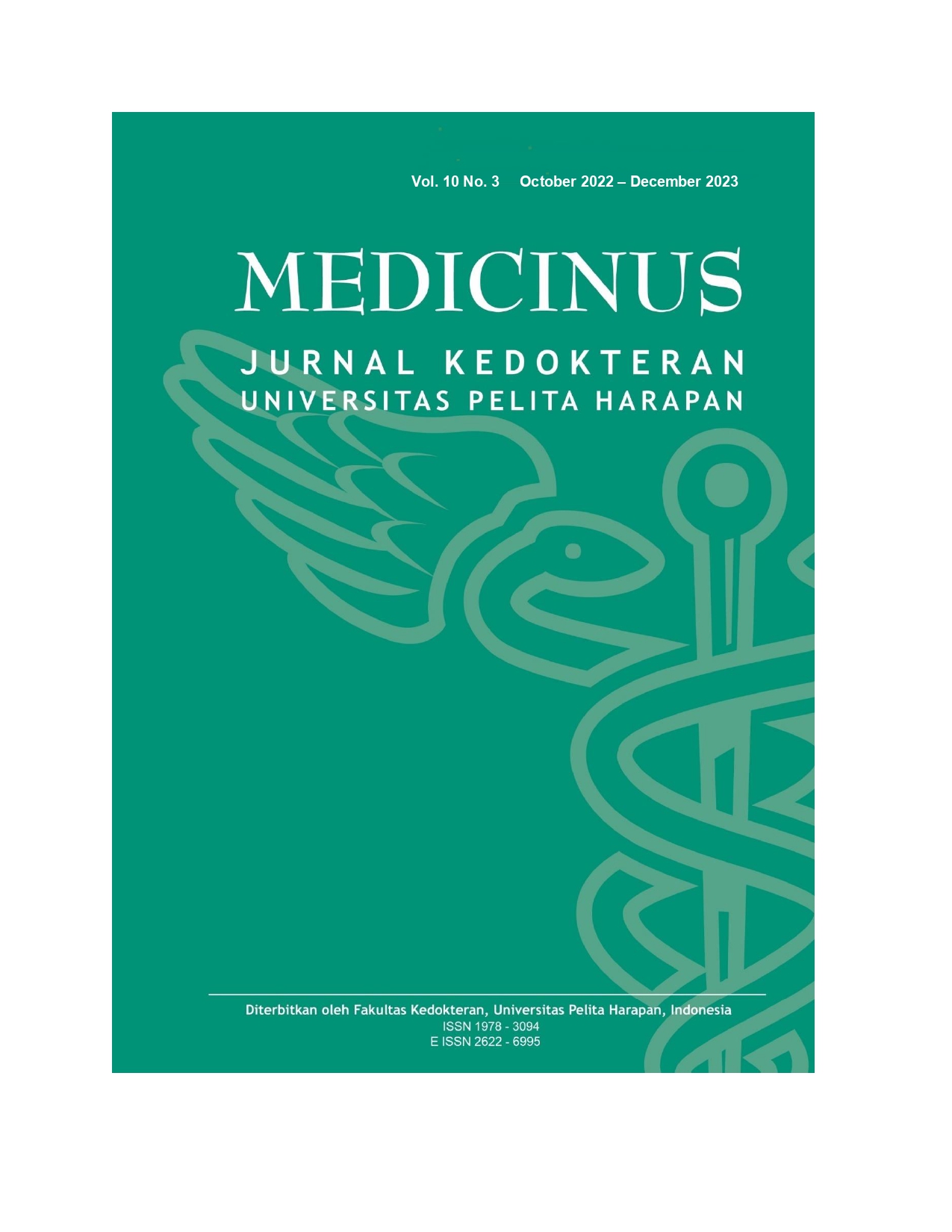Transvaginal Ultrasound as an Indicator of Preterm Birth
DOI:
https://doi.org/10.19166/med.v10i3.7039Keywords:
Premature parturition of preterm birth, Transvaginal ultrasound, Cervical lengthAbstract
Preterm Birth is delivery that occurs when the mother's gestational age is 20-36 weeks starting from the first day of the last menstrual period with a fetal weight still below 2500 grams. In preterm birth there are regular uterine contractions that cause thinning or dilation of the cervix before 36 weeks of gestation is complete. Approximately 50% of sequelae that occur in children are due to preterm birth. It is known that cervical dilatation in pregnant women is associated with preterm birth, so there are several screening methods that are used to predict preterm birth, including cervical length examination. Transvaginal ultrasound examination is a safe method of examination to measure cervical length objectively. Cervical length less than or equal to 25 mm or cervical dilatation 70% to 100% are expected to have preterm birth.References
1. Dahman HAB. Risk factors associated with preterm birth: a retrospective study in Mukalla Maternity and Childhood Hospital, Hadhramout Coast/Yemen. Sudan J Paediatr. 2020;20(2):99-110. doi: 10.24911/SJP.106-1575722503. PMID: 32817730; PMCID: PMC7423304. https://doi.org/10.24911/sjp.106-1575722503
2. WHO, UNICEF, UNFPA WBG and the UNPD. Trends in maternal mortality 2000 to 2017: estimates [Internet]. Sexual and Reproductive Health. 2019. 12 p. Available from: https://www.who.int/reproductivehealth/publications/maternal-mortality-2000-2017/en/
3. Jones SC, Brost BC, Brehm WT. Should intravenous tocolysis be considered beyond 34 weeks gestation? Am J Obstet Gynecol. 2000; 183: 356-60. https://doi.org/10.1067/mob.2000.107663
4. Kipikasa J. Bolognese RJ. Obsetric management of prematurey In : Fanaroff AA, Martin RJ. Neonatal-perinatal medicine: disease of the fetus and infant. 6 th edition. New York: Mosby-Year Book. 1997; 264-84.
5. Sakala EP. Board review series: obstetrics and gynecology. Baltimore: Williams & Wilkins. 1997; 175-7.
6. Winjosastro G. Kelainan dalam lamanya kehamilan. Dalam: Wiknjosastro G. Saifuddin AB, Rachimhadi T. Ilmu Kebidanan. Jakarta: Yayasan Bina Pustaka. 2000, 312-7.
7. O'Hara S, Zelesco M, Sun Z. Cervical length for predicting preterm birth and a comparison of ultrasonic measurement techniques. Australas J Ultrasound Med. 2013 Aug;16(3):124-134. doi: 10.1002/j.2205-0140.2013.tb00100.x. Epub 2015 Dec 31. Erratum in: Australas J Ultrasound Med. 2013 Nov;16(4):210-211. https://doi.org/10.1002/j.2205-0140.2013.tb00100.x
8. Priv.-Doz. Dr. B. Kuschel, Prof. Dr. K.-Th.M. Schneider. Verschlußoperationen am Muttermund - Maßnahmen zur ... - tum [Internet]. 2012 [cited 2022Oct4]. Available from: https://mediatum.ub.tum.de/doc/1107754/1107754.pdf
Downloads
Published
How to Cite
Issue
Section
License
Copyright (c) 2023 Jacobus Jeno Wibisono, Serena Onasis, Sri Mulyani Rana Nikendari, Aryasena Andhika, Maria Georgina Wibisono

This work is licensed under a Creative Commons Attribution-ShareAlike 4.0 International License.
Authors who publish with this journal agree to the following terms:
1) Authors retain copyright and grant the journal right of first publication with the work simultaneously licensed under a Creative Commons Attribution License (CC-BY-SA 4.0) that allows others to share the work with an acknowledgement of the work's authorship and initial publication in this journal.
2) Authors are able to enter into separate, additional contractual arrangements for the non-exclusive distribution of the journal's published version of the work (e.g., post it to an institutional repository or publish it in a book), with an acknowledgement of its initial publication in this journal.
3) Authors are permitted and encouraged to post their work online (e.g., in institutional repositories or on their website). The final published PDF should be used and bibliographic details that credit the publication in this journal should be included.





